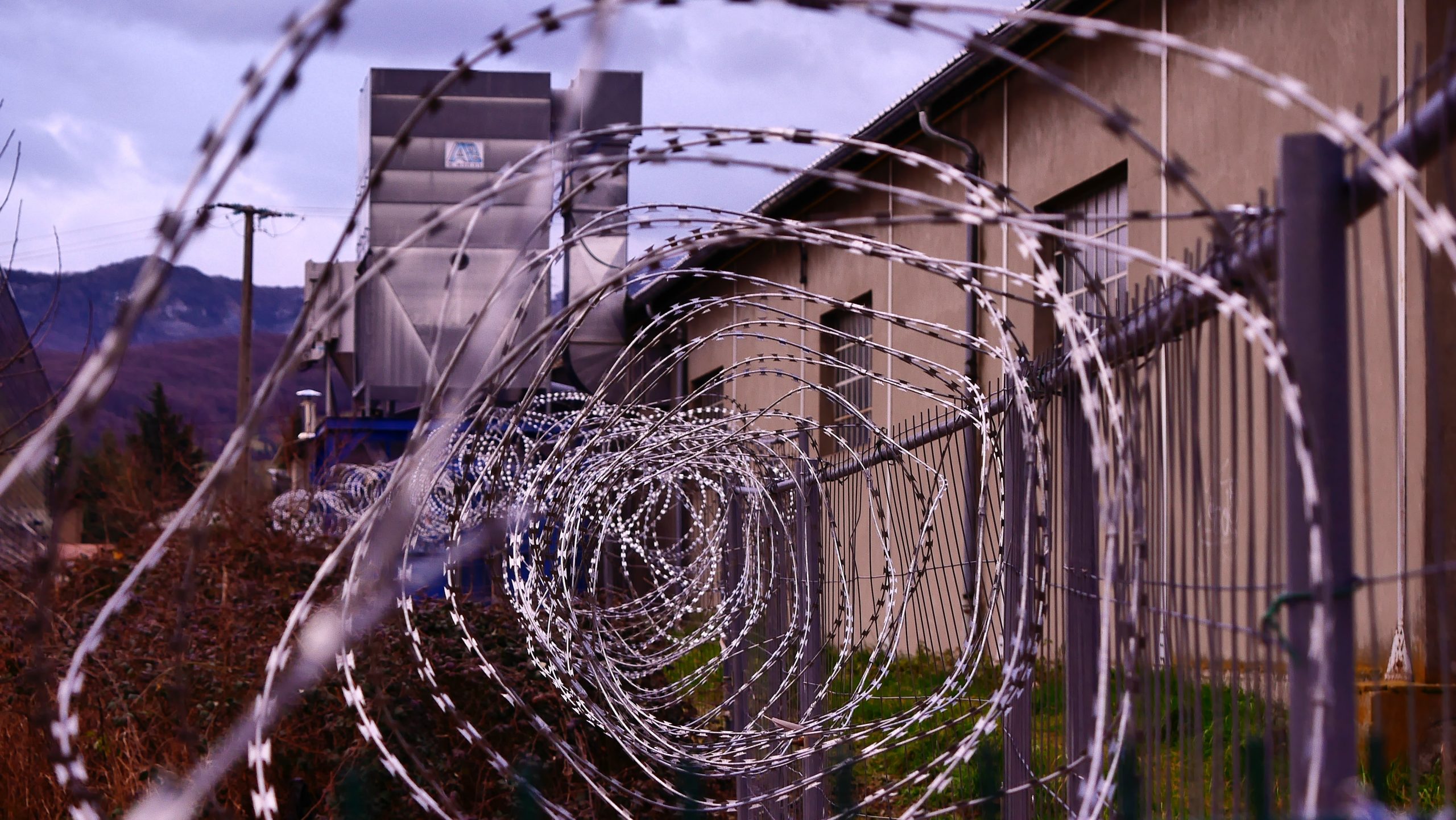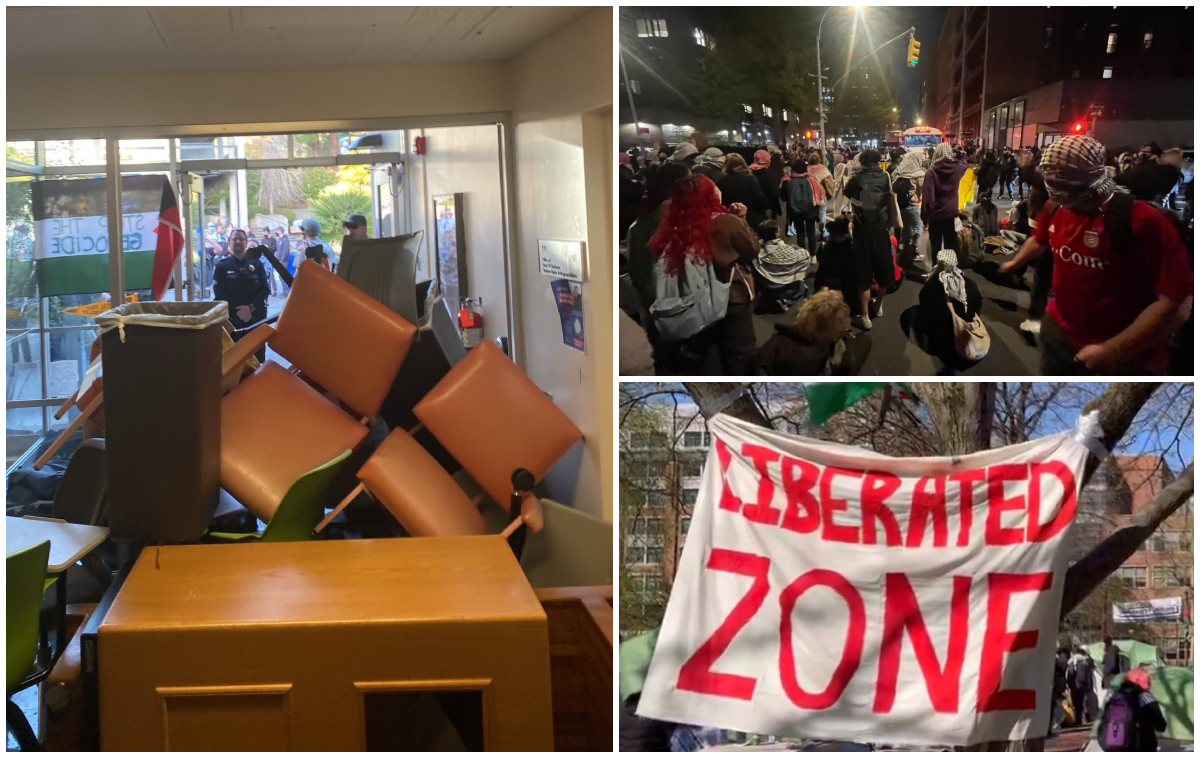Filed under: Action, Disaster, Featured, Health Care, Incarceration, Northwest

As one of the most severe fire seasons attacks the West coast, prisoners across Oregon are being shuffled into sub-standard conditions and possible COVID-19 exposure as Governor Brown continues to deny releases.
by Lena Mercer, Perilous Chronicle
The newest disaster inside Oregon prisons is raging from the outside in. As one of the most severe fire seasons attacks the West coast, prisoners across Oregon are being shuffled into sub-standard conditions and possible COVID-19 exposure as Governor Brown continues to deny releases.
The COVID-19 pandemic is slow moving in comparison to the fires cascading across the state and threatening several major metro areas. But these two calamities are joining forces along with a seemingly steadfast Governor to further endanger the lives of Oregon Adults in Custody (AIC) as they are classified by the Department of Corrections.
The risk of infection of and death from COVID-19 has not diminished as other emergencies have escalated. This is clear in the 6th prisoner death in the Oregon system at Snake River Correctional Institution (SRCI) on September 8th. Snake River is near the Idaho border and has had a major outbreak of COVID-19, along with allegations that the majority Idaho-based staff have been flagrantly ignoring quarantine protocols.
On the other side of the state, the fires moving quickly up and down the I-5 corridor have put several prisons in the path of destruction. On Tuesday September 8, the ODOC announced on Facebook that it had evacuated 1,450 prisoners from Mill Creek, Santiam and Oregon State correctional institutions which were threatened by the Beachie Creek and Lionshead wildfires. The prisoners were evacuated to the Oregon State Penitentiary (OSP), also in Salem, where they will be housed on “emergency beds throughout the institution” until the threat has passed.
At the time of that decision, OSP was already in the throes of its own COVID-19 outbreak. At least 143 positive cases of COVID-19 have been reported at the facility.
“We were evacuated more because of smoke and air conditions. And that doesn’t make a lot of sense to us because here over at OSP, the smoke in the air conditions are the same. It’s only a couple miles down the road”
Brian MacDonald, evacuated Oregon prisoner
Bryan MacDonald, one of the prisoners evacuated from the Oregon State Correctional Institution (OSCI) to nearby OSP, says he thinks the transfer process was both flawed and an unnecessary move to fulfill gluttonous budgetary needs. “I personally believe that if one person from OSCI catches COVID-19 and dies because they came to OSP and that can be attributed to the fact that this was done just for a budget, that’s murder” MacDonald told Perilous.
MacDonald also spoke about the seemingly arbitrary nature of the evacuation itself, with the smoke conditions in OSP being equal if not worse than his original facility. “We were evacuated more because of smoke and air conditions. And that doesn’t make a lot of sense to us because here over at OSP, the smoke and the air conditions are the same. It’s only a couple miles down the road” he said over the phone. He also noted the severe lack of space at OSP and the ways in which housing units at the origin facilities were ignored leading to interpersonal conflicts and a constant state of violence.
“We’re suffering in here,” MacDonald continued, “and we’re hoping that our suffering can lead to change where people down the line don’t end up suffering like this. We hope and beg for somebody to investigate this entire process that’s happened here because what the Oregon department of corrections has said makes no sense.”
According to MacDonald, fights are being broken up by corrections officers with pepper spray, exacerbating already miserable conditions. “If you’re sprayed per the policy, in the Oregon department of corrections, if you’re sprayed, you’re supposed to get a shower. I got sprayed and I wasn’t even a part of the fight. And I wasn’t given a shower.”
According to MacDonald and others inside, backpacks full of bleach are being used to hose away blood after violent attacks in between prisoners. The close quarters, lack of food and disregard for protective status is leaving the evacuees vulnerable as tensions continue to escalate.
As he is shuffled from one place to another without any information from prison officials as to why, MacDonald says he feels like a “pawn.” He notes that often the officers on duty have not even been filled in as to what the next step may be or what the current protocol entails. “Just literally at shift change, like whatever the person in charge was coming up with in the morning and the person in the afternoon seems to have a completely different plan,” MacDonald explained. “The officers seem to be just as frustrated with it as we are.”
Evacuations have also occurred from other Oregon prisons. On Thursday, September 10, 1300 female prisoners were evacuated from Coffee Creek Correctional Facility in Wilsonville to Deer Ridge Correctional Institution in Madras.
Deer Ridge is a mixed security facility with a 774-bed minimum-security unit and a 1,228-bed medium-security unit. In order to accommodate the nearly 1000 women transferred into Deer Ridge, a minimum-security building not used since 2016 was opened to take in men from the larger medium security unit at Deer Ridge. The units lacked phones, adequate ventilation and was infested with mice and mold according to the prisoners able to get communications to the outside.
Lawyers for some of the women transferred have detailed harrowing accounts of neglect and deplorable conditions during the transfer on social media. “Women were urinating on the bus, others bleeding through their menstrual products” one account reads.
5. They were finally let off the bus at around 7. It was cold, the air was smoky, the worst quality in the world due to the fires. Still, they had to wait outside in the freezing air, some still in their urine or blood stained clothes, for another 30+ minutes
— “Real Lawyer” (@alvareztbo) September 12, 2020
Prisoners were reportedly zip tied for the duration of the several hour drive between the two facilities. Upon entering they found supplies were spread thin including meals being offered and that they would not be given their daily medications, some of which they are going on two days without.
On Friday September 11, according to reporting from The Bulletin reporter Garrett Andrews, around 200 prisoners in Deer Ridge kicked through doors and forced their way into the yard as smoke conditions became uninhabitable inside. According to a Oregon DOC news alert all but 12 of the people originally staging the mass refusal had returned inside by 2am. And while the Crisis Negotiation Team was deployed, the DOC assures that no force was used to clear the yard.
Back in Salem, at OSP conditions are being reported as deplorable at best. A coalition of community organizations addressing the rising crisis of incarceration in Oregon including, Lane County Mutual Aid, Care Not Cops, Critical Resistance PDX, Lane County Hunger Strike, Black and Pink Pdx and the Siskiyou Abolition Project crafted a series of demands of Governor Brown on September 9.
⚡️ PHONE ZAP ⚡️ Oregon prisoners are being transferred to OSP to avoid wildfires, despite OSP being a #COVID19 hotspot. Demand that @OregonGovBrown immediately address these compounding crises and #FreeThemAll. pic.twitter.com/0xlRB6bA7g
— SiskiyouAbolitionProject (@ProjectSiskiyou) September 9, 2020
These demands were an attempt to address the multiplicity of issues in Governor Brown’s refusal to reduce the prison population as the number of emergencies compounded. These demand call-ins or ‘phone zaps’ have been a consistent tactic used by outside support organizations to apply pressure to various public and private institutions involved in a state’s carceral system.
On September 13, Lane County Hunger Strike, the outside support group for those on hunger strike in the Lane County Jail released a Twitter thread transcribing a call with a prisoner in OSP. The voice from inside the facility echoed many of the concerns from outside supporters that these transfers would lead to even higher COVID19 infection rates. “There are no Covid protections. None. We are sleeping inches away from each other. There is very little cleaning, if any, being done. In fact, hygiene has completely been taken away. I’ve had only one shower in a week and I’m still wearing the same socks as I was Tuesday”
The situation in OSP continues to deteriorate as air quality in the Salem area grows worse with Air Quality Indexes (AQI) reaching unprecedented levels.
MacDonald hopes that this moment of crisis might lead to systemic changes in the way the justice system in the country operates. “This is an extreme circumstance and this may be a first for the state of Oregon, but as the inmates and the people in the justice system, we would like you guys and everybody in the public to recognize that these kinds of situations are not new to us. These things happen in the prison system way too much and had been happening for decades. Justice reform is being screamed for because of the atrocity with George Floyd, we would hope that the public would recognize that justice reform doesn’t need to just happen on a level of the police officers who arrest people. It needs to happen throughout the entire justice process, which means the courts and jails and all the way up to the prisons that people are held in.”
Photo Credit: Thanks to Hédi Benyounes for sharing their work on Unsplash.





